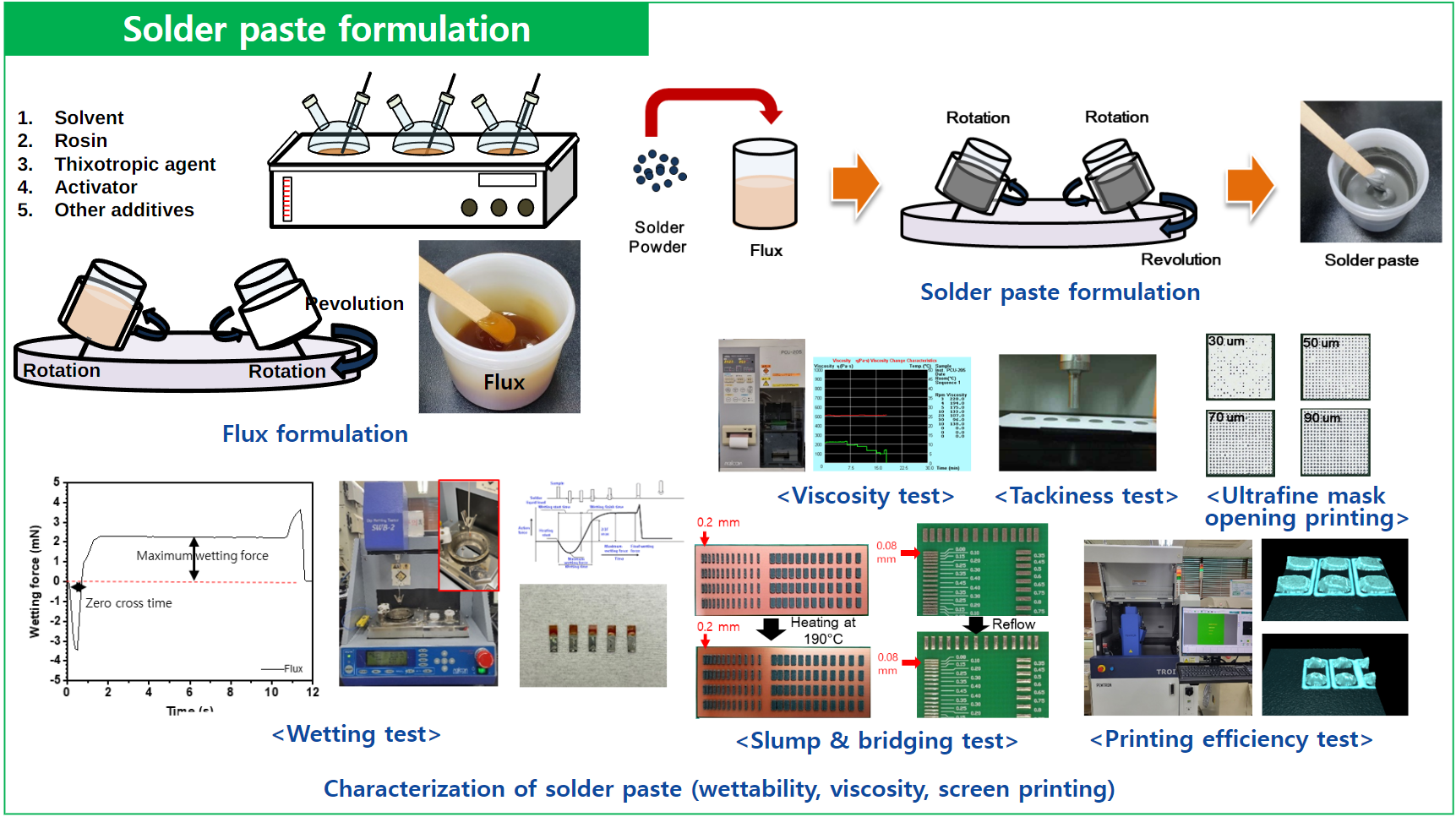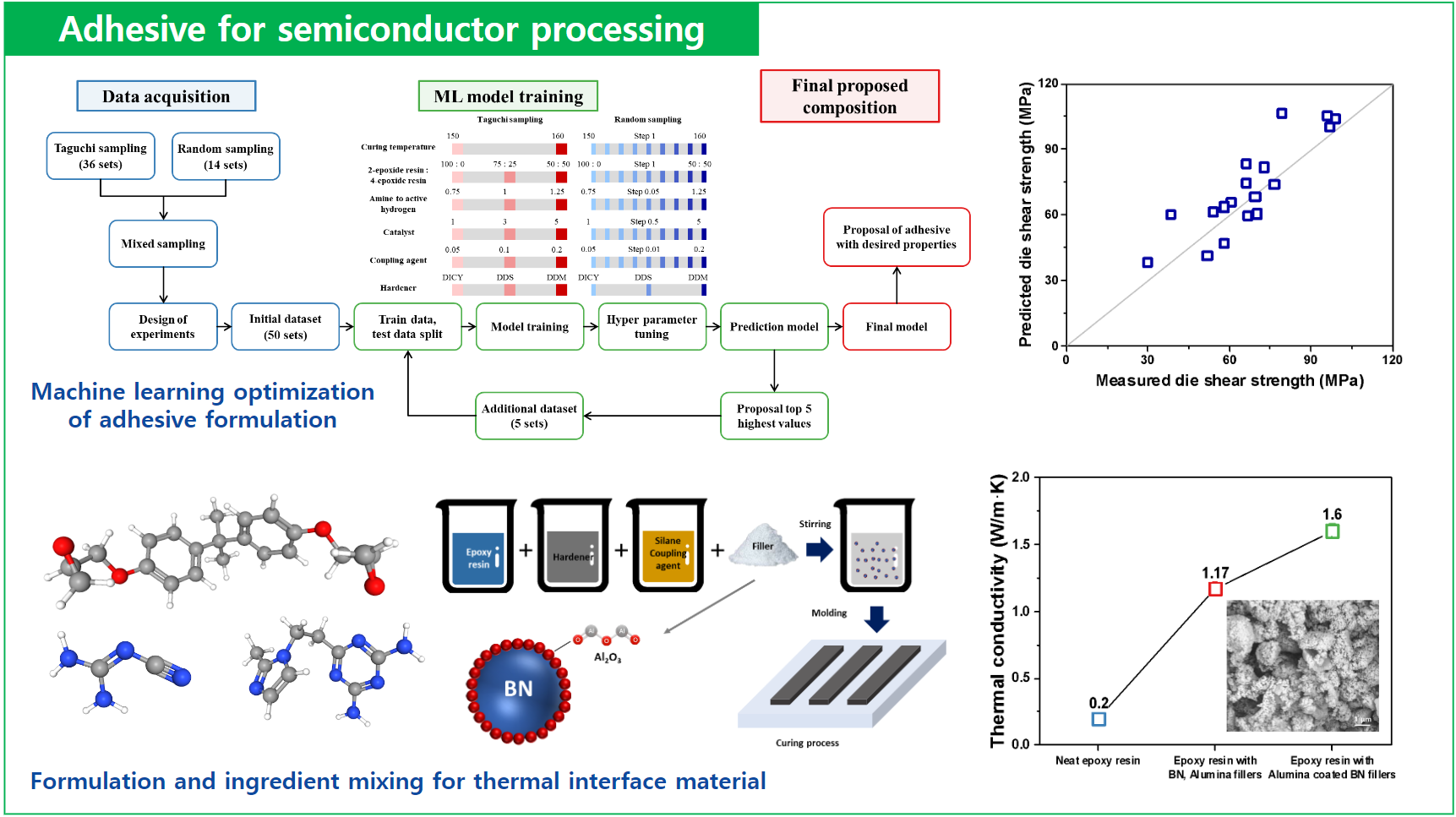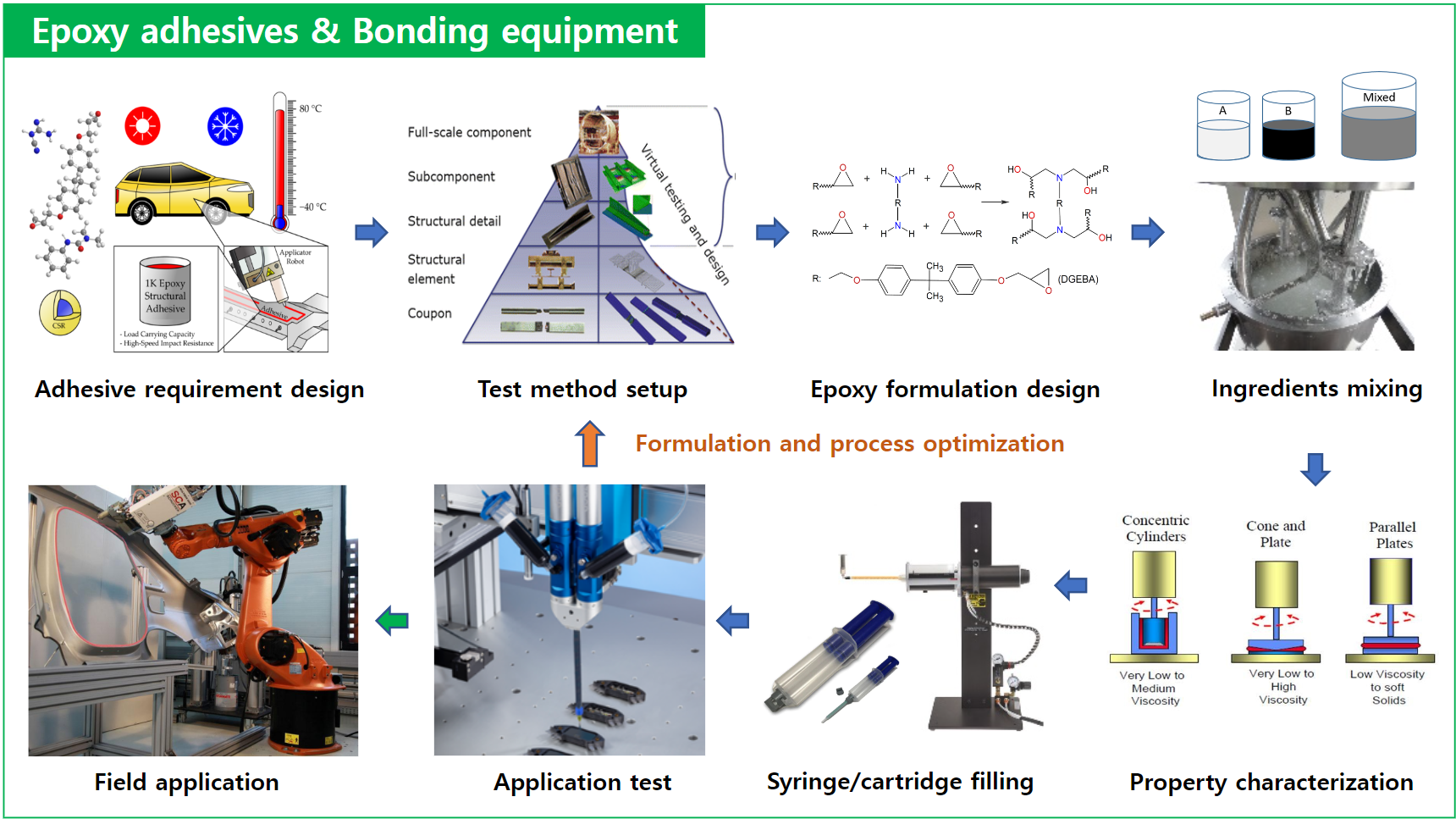Research
Materials for semiconductor packaging and joining process
Solder alloy & solder paste
Solder paste is a mixture of solder alloy powder and flux, serving as a bonding material for attaching components to a printed circuit board. It eliminates oxides from component and board electrodes, establishing an electrical connection by ensuring wettability during reflow soldering

Introduction
Electronic products are continuously shrinking in size, and more chip functionalities are being integrated into compact packages. In this integration, System in Package (SiP) technology is widely employed, allowing various types of heterogeneous components to be integrated into a single package. SiP packages utilize fine-pitch flip chips and ultra-small passive components, requiring solder paste with even smaller particles for their assembly. Therefore, soldering processes necessitate the use of solder paste composed of extremely fine powder.
Adhesive for semiconductor packaging
Utilizing organic materials such as epoxy to impart adhesive strength, the synthesis and formulation technology of adhesives for semiconductor packages and electronic component bonding involves incorporating fillers tailored to specific purposes, facilitating the transmission of electricity and heat

Introduction
Adhesive formulation for semiconductor packaging is a technology to design organic-based adhesive materials used in semiconductor packaging and electronic component assembly, tailored to specific purposes such as electrically conductive adhesives, thermally conductive adhesives, insulating adhesives, underfills, and encapsulants. This includes adhesive formulation technology that determines adhesion strength and mechanical properties through organic resins, curing agents, catalysts, coupling agents, and filler blending technology that determines thermal and electrical performance such as thermal conductivity, coefficient of thermal expansion, and electrical conductivity by metal/ceramic fillers. Recently, the introduction of machine learning has also enabled the implementation of adhesive formulation optimization with minimal experimentation.
Epoxy adhesives & Bonding equipment
The formulation technology for enhancing the high performance of epoxy adhesives, characterized by superior adhesive strength, mechanical strength, heat resistance, and chemical resistance, involves the application of coating, curing, and bonding process equipment technology for practical implementation in industrial settings

Introduction
Epoxy adhesives are cost effective joining materials showing the properties of high adhesion, mechanical strength, heat and chemical resistance. Through the various formulation techniques, the wide range of viscoelastic behavior, curing behavior and cured properties can be achieved due to the many kinds and large number of ingredients available for epoxy. Recent researches about epoxy adhesives include maximizing the content of heat conductive fillers for the semiconductor packaging area issues and synthesizing 2K room temperature curing type epoxy toughening agent and maximizing the unbreakable property for the dissimilar joining and cryogenic applications in the heavy industry area.